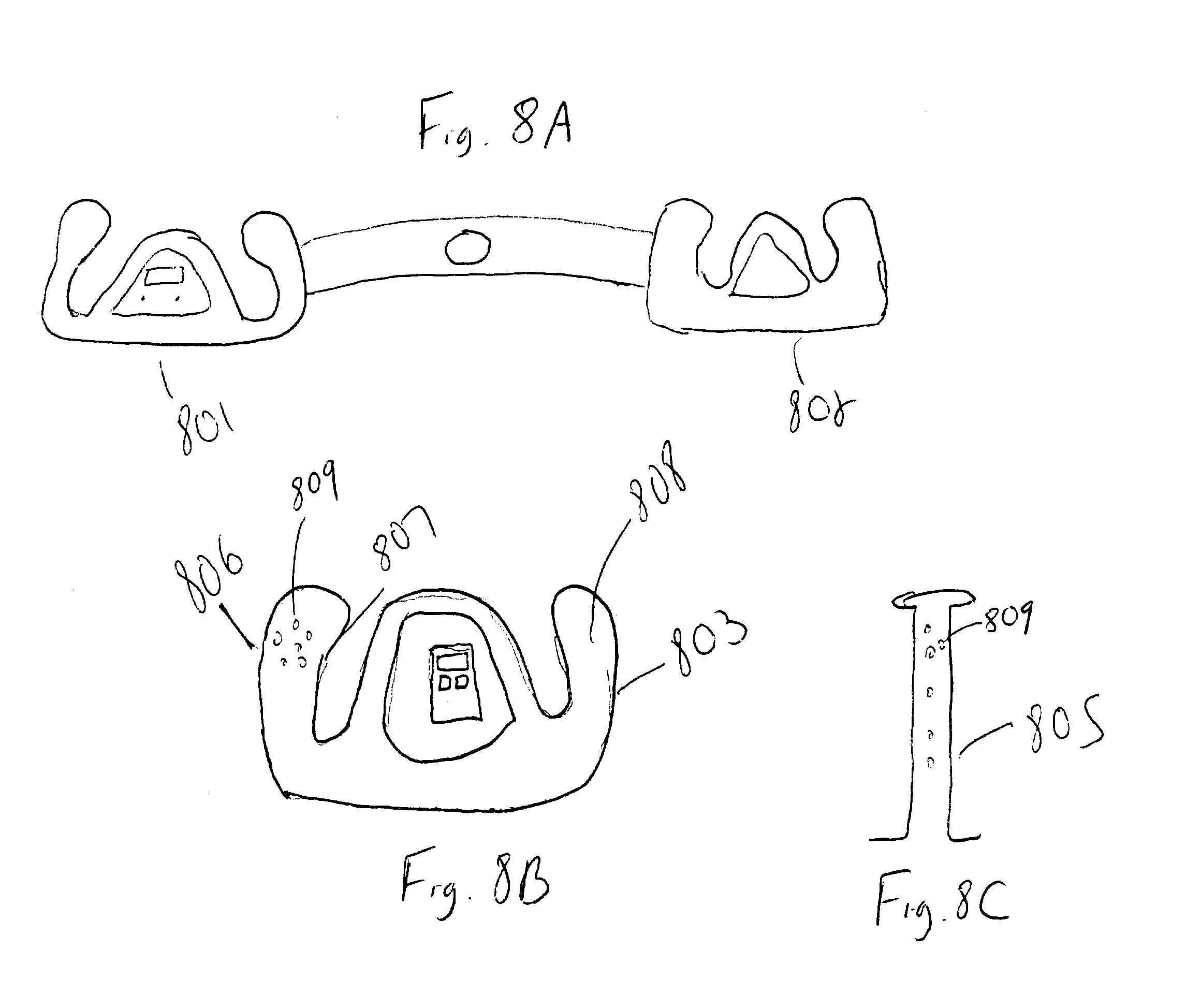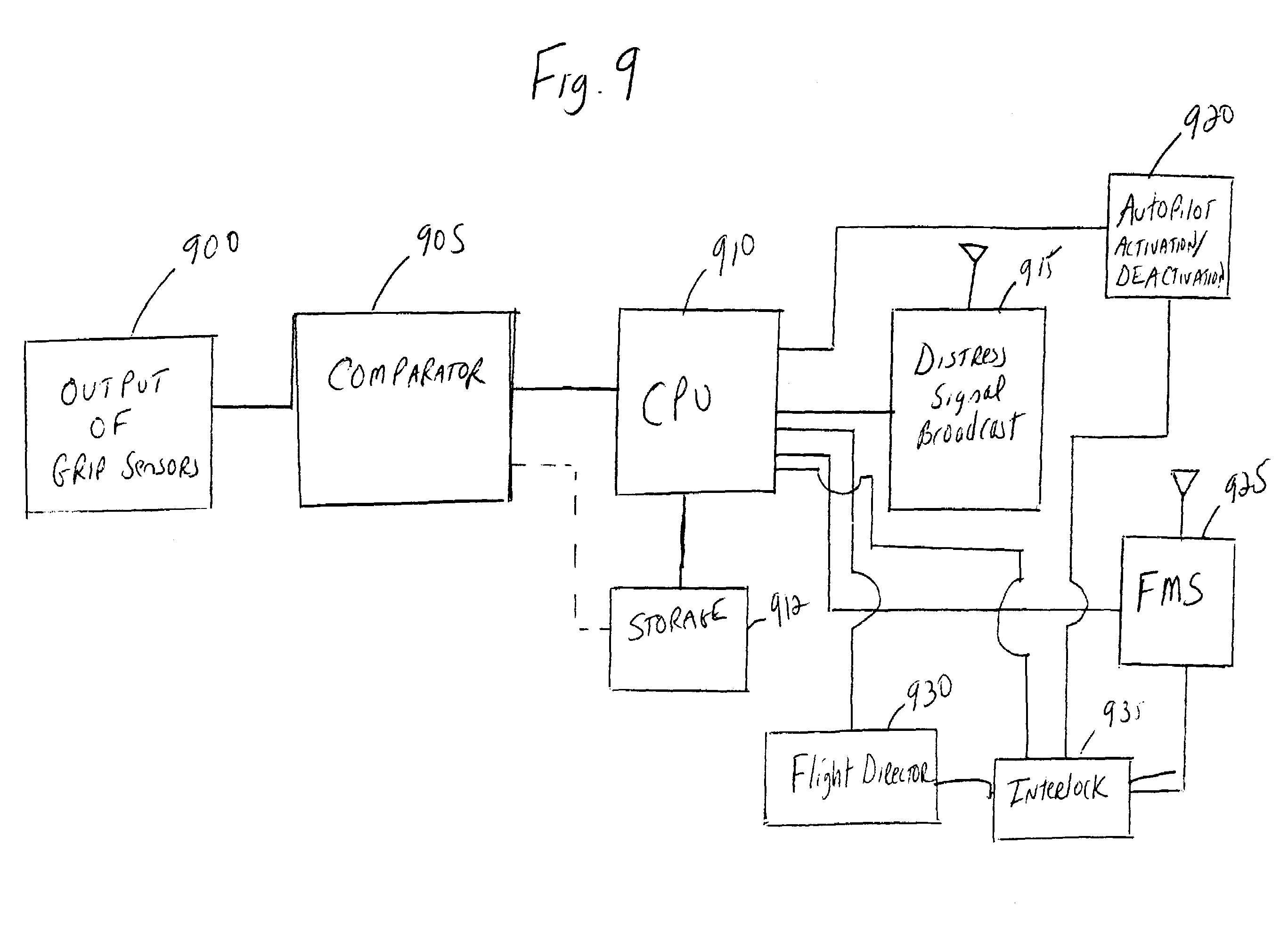The patent for an unauthorized device having the capabilities of being locked through biometric technology was created by Dr. Michael Recce. In 2003, he received patents on pressure/fingerprint scanners. Prior, there was nothing quite like it. The designs were an entirely new idea, something that was almost movie-like in conception. At the time of his patent, there were only physical locks to the cockpit, and safes and locked holsters for guns. There was no way of authorizing a designated user while simultaneously denying access to other persons. The process that he invented is capable of measuring multiple sensors simultaneously every 10 milliseconds. This was the answer to the problem that the market was having in regards to biometrics. Its usage is limitless and can be applied to anything that a human operates, whether it is found on a gun, an airplane, a boat, a power tool, or even construction equipment. The intended purpose of its creation was to prevent malicious use of objects, devices, or crafts. Should Recce’s invention achieve success and become widely utilized, it would result in a massive decrease in accidental and malicious deaths. This preventive measure is said to be the inventor’s chief motivation behind his work.
At the time, Recce was a professor of Information Systems at the New Jersey Institute of Technology. He recently held a Quantcast segment at IAB Engage, in 2013, discussing computer advertisement, specifically studying the way young people interpret ads and which part of the brain accepts the message of the ad. Recce currently holds five patents in three major areas: the Unauthorized User Prevention Device and Method, which is the idea that became his biometric technology; consumption history privacy, which is a way for internet advertisers to target people based on the search history while protecting the identity of the person; and assessment of risk associated with doing business with a party. One may wonder what in particular motivated the inventor’s interest in biometrics. As an owner of multiple guns, Recce was aware of the danger and peril that could befall someone when an unauthorized person takes hold of a firearm. Concerned about the safety of Americans, he created the iGun, which utilizes biometric technology to identify the user of a firearm by the signature grip and hand print. This same concern for safety led him to expand his contributions in this technology to door handles for households, industrial buildings, offices, and vehicles, as well as car keys, ignition starters for vehicles, steering wheels for cars and aircraft, and the joy-stick on an aircraft.[i]

US7155034 is a continuation of prior fingerprint scanning technologies, arguably combining pre-existing methods into one. Recce’s patent cites twenty-six patents. Among them are US 3939679, “Safety System,” a remote-controlled safety mechanism; US 8172675 B2, “Personalization Using a Hand-Pressure Signature,” the memory storing device to record the pressure applied to it; US 9341424 B2, “Firearm Locking Assembly,” a locking mechanism used to prevent any use of the item (in this case, a firearm, joystick, door handle, etc.); and US 20060025900 A1, “Apparatus, System and Method for Aircraft Security and anti-Hijacking Intervention,” a prevention to keep unauthorized pilots from manning an aircraft any kind. Recce’s patent continues the creations and inventions that use fingerprint-matching technology, by uniting the three components of a form of ultrasound, silicon, and optical technology for the Authorized Personnel Biometric Detection System Preventing Unauthorized Use of Aircraft and Other Potentially Dangerous Instruments.
Other inventors have also drawn upon Recce’s work, in biometrics and safety technologies. Patents which cite his include: US 7406368 B2, “Apparatus, System and Method for Aircraft Security and anti-Hijacking Intervention;” US 8172675 B2, “Personalization Using a Hand-Pressure Signature;” U. S. Patent #8762734 B2, “Biometric pressure grip;” US 8902044 B2, “Biometric control system and method for machinery;” US 9341424 B2, “Firearm locking assembly ;“ US 20060025900 A1, “Apparatus, System and Method for Aircraft Security and anti-Hijacking Intervention;” US 20090002161 A1, “Security System for Motorcycle Crash Helmet; ” and US 20140366714 A1, “Roman Shield Armored Vehicle (RSAV).”
The firearm is considered by many to be the most obvious and direct application of biometric detection safety systems due to its popularity among the American people: a staple instrument in the work of law enforcement and military professionals, and commonly used by the American public. Firearms are capable of causing deliberate and accidental harm in the hands of secondary users. Unfortunately, we experience both ends of that spectrum as well as everything in between. The airplane was never viewed in the same light as a gun. Mainly because they were seldom used to cause harm to others. The events of September 11th forced the United States to accept the transportation industry as a possible medium of terrorism.
It became apparent that Recce’s patent for firearm biometrics could be applied in areas not involving firearms, such as the transportation industry. Plane joysticks, tractor trailer steering wheels, and cruise ship helms could be protected courtesy of Recce’s biometric detection technology in order to prevent, or at least deter, terrorists from using these vessels to bring harm to others. This patent in particular is an example of how certain events in history, although sometimes tragic, spark innovation and creative thinking to better safeguard the public in the future. Much like the sinking of the HMS Titanic alerting the world to the need of maritime safety improvements, the terrorist attacks committed on the United States motivated inventors to create better technology to ensure the safety of the American people. It is this very thought process that fostered some of the most significant technological contributions of our day, notably, the biometric detection system patented through US7155034.

The invention process by its very nature is a scientific process that builds upon previous ideas of inventors passed. Whether changing the application of an invention or modifying it to meet current expectations of that product, technology is constantly changing to meet the needs of society. As is the case with these biometrics, which were initially intended for firearm safety and were later adapted to be applied to airplanes and other vessels.
By Naomi Segura, Brian Lallo, Robert Fullagar
[i] Giles, Matt, “Can A Smarter Gun Prevent a Massacre?” Popular Science, Popular Science. 04 Dec. 2015. Web. 06 Dec. 2016.
